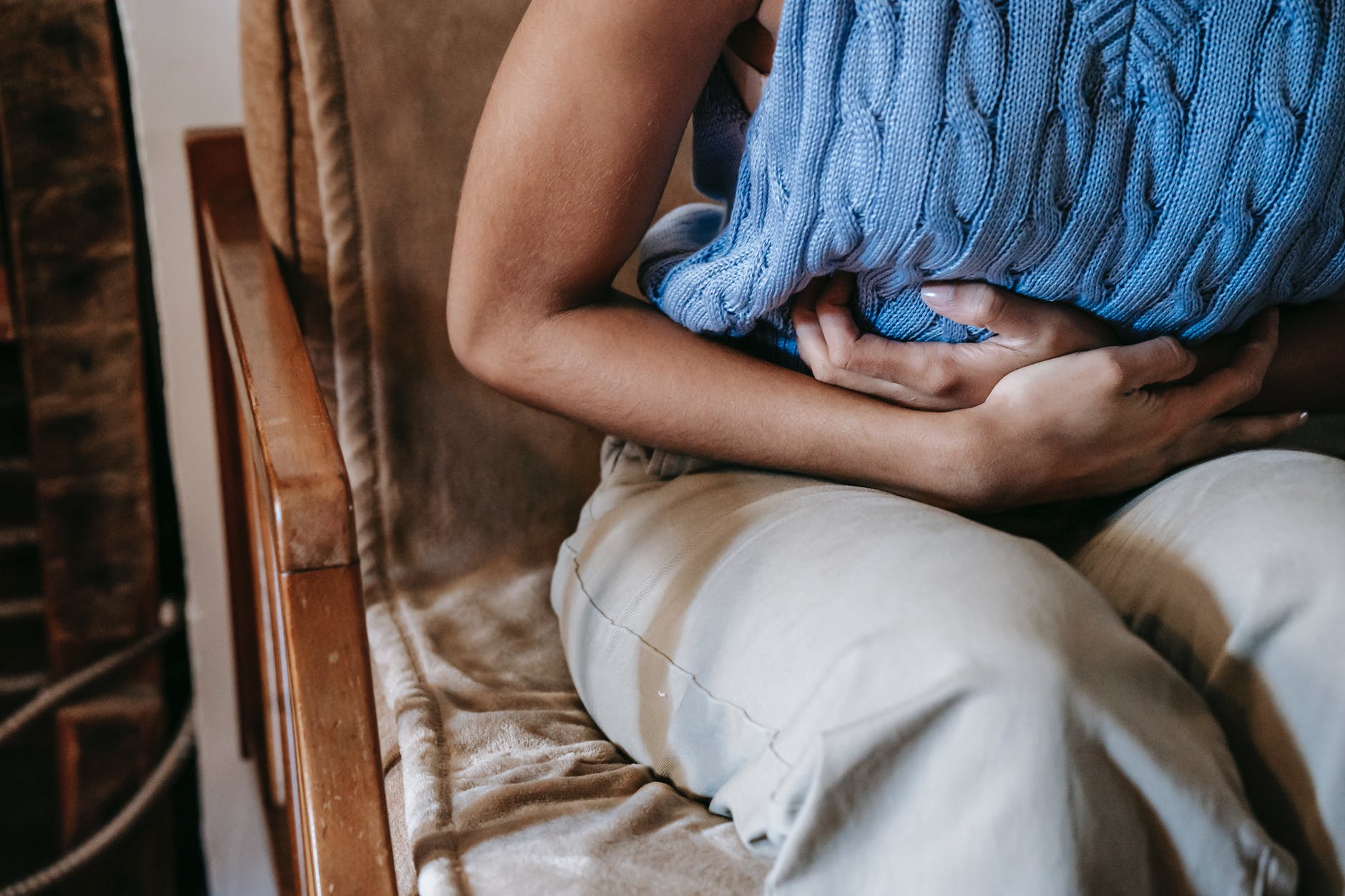Ever heard of the histamine & oestrogen connection? Ever wondered why your histamine symptoms are worse before your period?
Do you feel like you have been eating low histamine foods and yet, right before your period your symptoms flare up? Headaches, fatigue, digestive issues?
Yet a few days later, things seem to settle back down again and you can’t seem to pinpoint where it came from?
You aren’t imagining things, there is a connection between histamine and oestrogen. This could very well be playing a part in your symptoms being worse around this time.
In this blog, I’ll go into more detail about the histamine & oestrogen connection.
Understanding this connection can help you make different choices around the different times of your cycle.
Histamine and Oestrogen
Firstly, let’s look at both histamine and oestrogen.
Histamine is an amine, a natural food chemical present in a large variety of food. Histamine intolerance can be caused by a lack of DAO enzyme, which helps to break down histamine in the gut.
Oestrogen is a female sex hormone that has many functions in the body including:
– Helping with the development and maintenance of the female reproductive organs
– Plays a role in bone health, cognitive health, the function of the cardiovascular system and other essential body processes.
PMS or symptoms around your period
Many women experience PMS or symptoms around their periods.
PMS or Premenstrual syndrome symptoms around your period can present as either physical or emotional symptoms or a combination of both:
Emotional symptoms:
- Anxiety or Depression
- Crying or mood swings
- Food cravings
- Change in concentration or focus
- Insomnia
- Change in libido
- Irritability
Physical symptoms:
- Pain in the joints or muscles
- Headache or migraines
- Fatigue
- Bloating
- Fluid retention
- Sore breasts
- Acne
- Digestive upsets including diarrhoea or constipation
- And more
Histamine can also cause the third set of symptoms such as migraines, hives, sinus issues, fatigue or digestive issues. This could be due to the histamine & oestrogen connection which I’ll explain in more detail below.
The Histamine & Oestrogen Connection
Oestrogen and histamine reinforce each other. Oestrogen triggers histamine release. Histamine causes increased oestrogen production.
Studies have found that oestrogen affects mast cells. Mast cells release histamine in response to various triggers as part of the immune system. Mast cells can be found on the skin, airways, gastrointestinal and gastro-urinary tracts, in fact, they are in most organ systems.
It’s the form of oestrogen, oestradiol, particularly that can elicit activation of mast cells.

Oestrogen, DAO & MAO.
Diamine Oxidase (DAO) is an enzyme that helps break down histamine in the body. Monoamine oxidase, (MAO) is an enzyme that catalyzes the breakdown of other neurotransmitters as well as histamine.
Histamine intolerance isn’t specifically an intolerance to histamine, but rather a deficiency in the enzyme DAO that breaks down histamine. This leads to excess histamine in the body.
Oestrogen can down-regulate DAO and MAO so there are fewer of these enzymes available. DAO and MAO break down histamine. So if there are not enough of these enzymes the histamine does not break down and recirculates, which can cause symptoms.
3 times when histamine may be affected by oestrogen:
There are 3 main times when you may notice that your histamine symptoms may be increased. These times may relate to oestrogen.
The 3 times when histamine may be affected by oestrogen:
1. Right before your period. Right before your period or in the mid-luteal phase of your cycle, oestrogen rises.
2. In the lead-up to ovulation. Oestrogen levels rise during the mid-follicular phase and then drop after ovulation.
3. When you are taking the combined contraceptive pill. The combined contraceptive pill contains oestrogen and progesterone. It’s the oestrogen that may affect histamine during this time and hence the increase in histamine symptoms.
Have you noticed that your histamine symptoms have been worse at this time? This could be anything from headaches or migraines, sinus issues, fatigue, skin issues, digestive issues, nausea, dizziness or vomiting.
How Histamine affects Oestrogen.
Histamine also feeds the vicious cycle because it can stimulate the ovaries to produce more oestrogen. It does this with luteinizing hormones (LH). LH helps the release of oestrogen, which is needed for ovulation to occur. Increased LH leads to more oestrogen, increased oestrogen increases histamine and the cycle continues to repeat.
So in addition to eating a diet high in histamines, which can cause histamine reactions, in turn, histamine also stimulates the ovaries to produce more oestrogen and the cycle of histamine and oestrogen affecting each other continues.
The Menstrual Cycle
As mentioned above, if you ever wondered why your histamine intolerance symptoms seem to be worse around your period, this is because histamine responds to the levels of oestrogen. Oestrogen fluctuates at ovulation and right before your period is due. Therefore the symptoms tend to be worse and you may feel more sensitive during these times.
3 ways that you can combat these times during your cycle are to:
1. Ensure that you are eating a low histamine diet. This ensures that the histamine bucket isn’t already full when you are in the lead-up to ovulation or your cycle starting. You can find out more by downloading my Low Histamine Food Guide Here. Don’t reintroduce new foods during this part of your cycle.
2. Likewise, eat foods (low histamine ones) that help to support liver detoxification of oestrogens, like broccoli and cabbage.
3. Aim to live a low tox lifestyle. Xenoestrogens found in things like plastics can have an effect on oestrogen in the body and therefore increase the vicious cycle that occurs between oestrogen and histamine. A toxic lifestyle also has an impact on gut health which is also a key factor in improving histamine intolerance. Don’t put hot food or liquid in plastics, use glass, pottery or stainless steel instead.
As mentioned above, both histamine & oestrogen affect one another in what is known as the histamine & oestrogen connection. Therefore, part of the picture of managing histamine is also looking at oestrogen and what it is doing in the body, and addressing underlying issues.
Struggling to get answers about your histamine intolerance symptoms?
Watch my free Masterclass – The 5 Steps to Healing from Histamine Intolerance.
You will learn my 5-Step plan, the exact same method I used to recover from histamine intolerance. These 5 steps everyone with histamine intolerance must know to resolve all those confusing symptoms and get back to eating foods you love without fear!

References
Maintz, L., & Novak, N. (2007). Histamine and histamine intolerance. The American journal of clinical nutrition, 85(5), 1185–1196. https://doi.org/10.1093/ajcn/85.5.1185
Maršavelski, A., Mavri, J., Vianello, R., & Stare, J. (2022). Why Monoamine Oxidase B Preferably Metabolizes N-Methylhistamine over Histamine: Evidence from the Multiscale Simulation of the Rate-Limiting Step. International journal of molecular sciences, 23(3), 1910. https://doi.org/10.3390/ijms23031910

 Histamine and Stress and the Histamine Bucket
Histamine and Stress and the Histamine Bucket